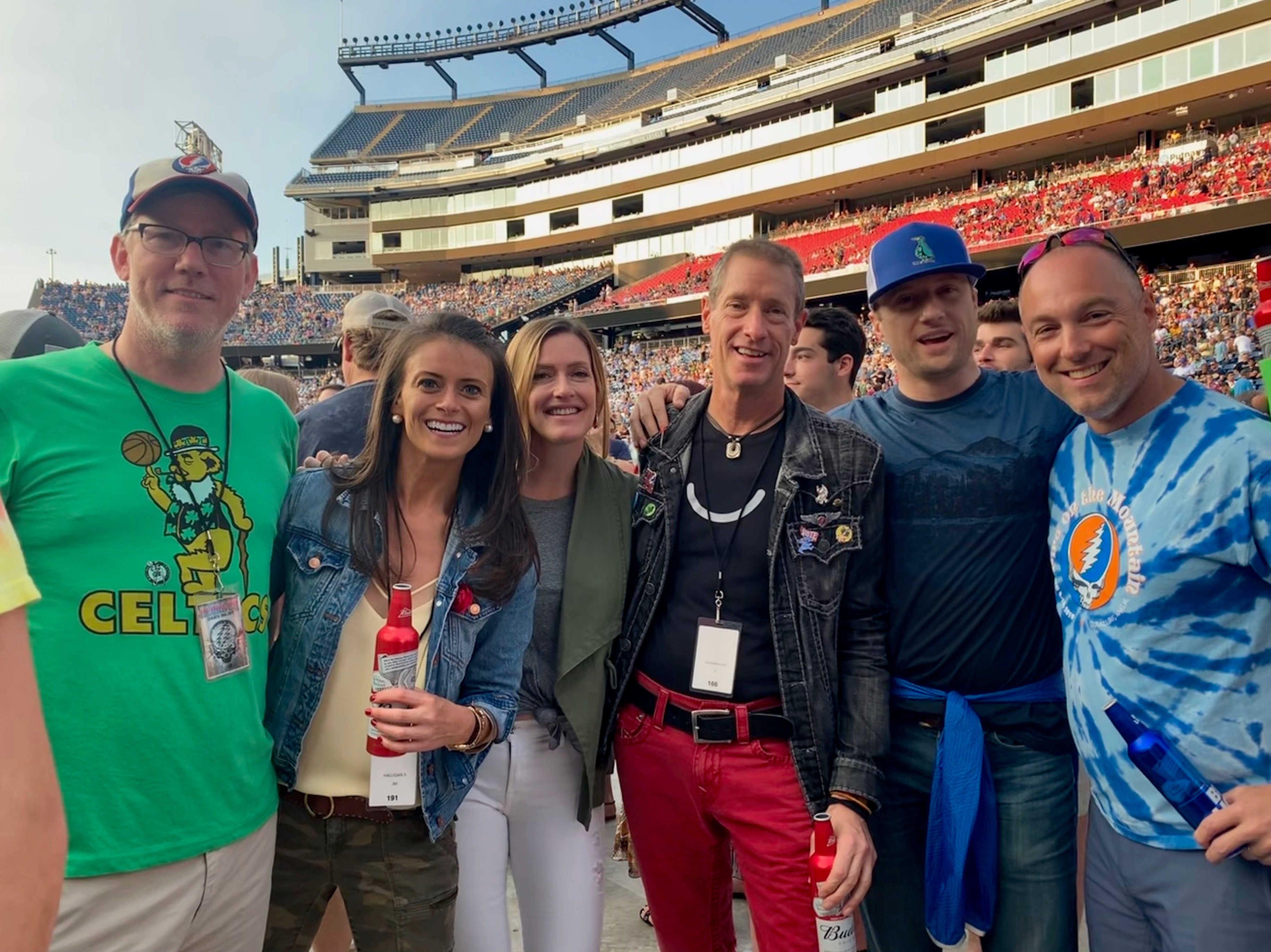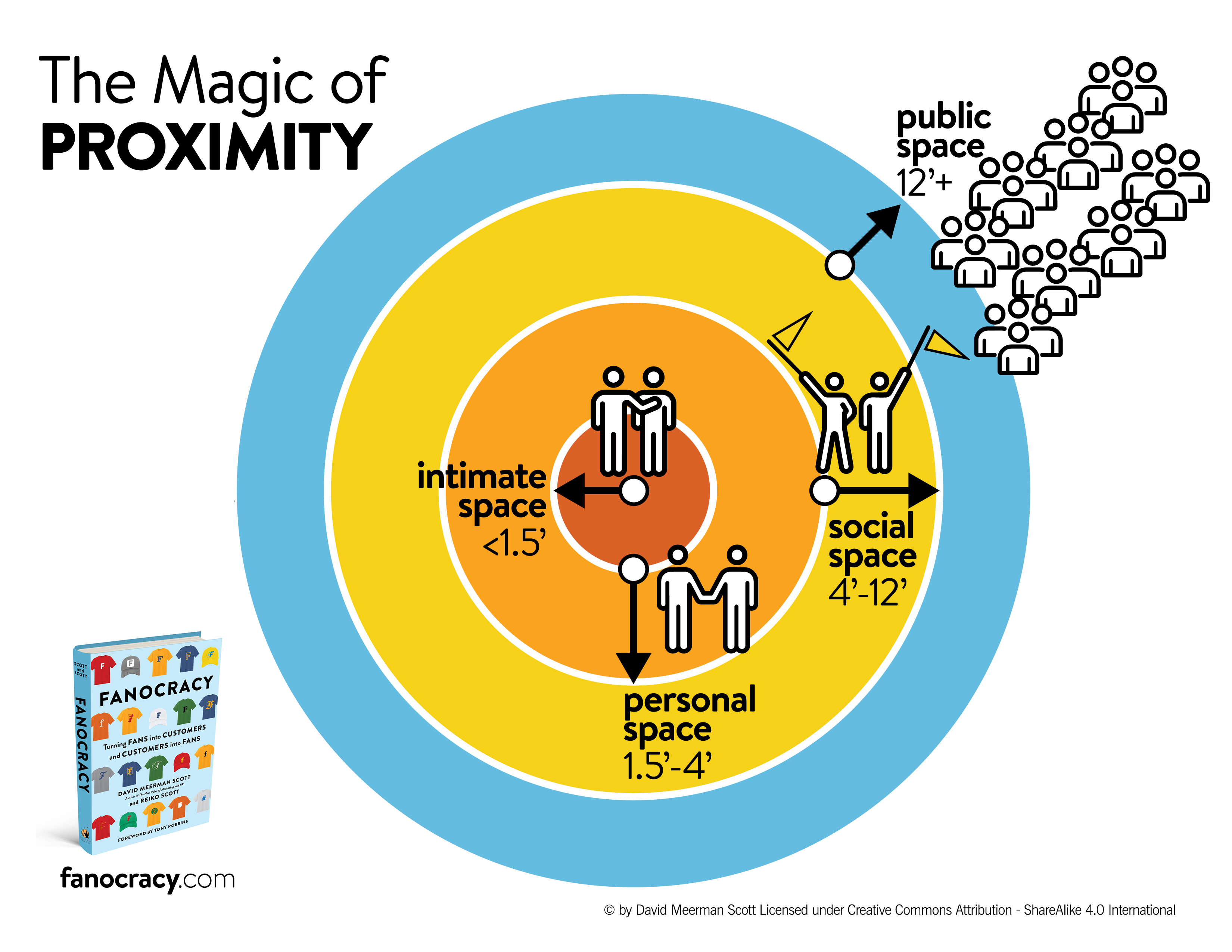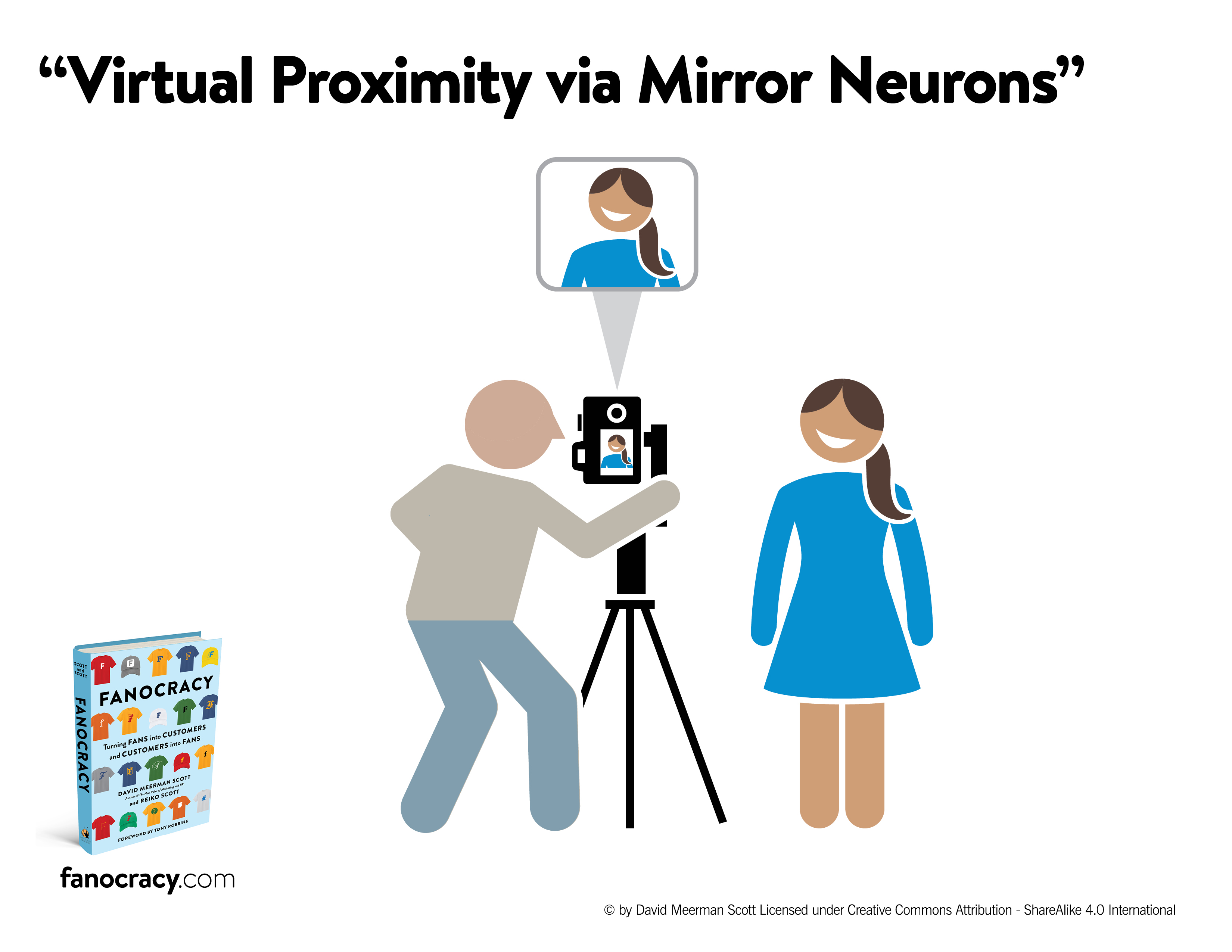How do some brands attract word-of-mouth buzz and radical devotion around products as every day as car insurance, surfboards, and underwear?
Ultimately, they embody the most powerful marketing force in the world — die-hard fans.
As a massive fan of live music (I've seen over 790 live shows including 75 Grateful Dead concerts), the idea of "fandom" has fascinated me for decades.
Five years ago, I set out to study fandom. I began by asking myself — Why do I love live music so much? Why do other people love watching the Boston Red Sox or running a 5K or NASCAR?
Based on discussions with hundreds of people about their passions, I've come to realize the key is genuine human connection.
We love to be near like-minded people. When we are part of a tribe, when we speak the same language and know the rituals, we feel powerful connections with others who share that same interest. That's why I love live music — because I go to shows with my friends.

Because of the changing nature of the world, I knew it was essential to understand how to reach all kinds of people, including millennials and Generation Z. It is for this reason that I teamed up with my 26-year-old daughter Reiko to research and write our book called Fanocracy: Turning Fans into Customers and Customers into Fans.
This post, on how to build a fandom for your business using the power of proximity, is based in part on the ideas in our book.
Fandom isn't just for celebrities anymore. It can be rocket fuel for any business or nonprofit that chooses to focus on inspiring and nurturing true fans.
Fandom is everywhere. It's the key for any organization, artist, or entrepreneur to be successful in bringing people together. Fandom spans generations to bind individuals together in excitement, purpose, and buying power. No matter who you're dealing with, understanding fandom is the cornerstone to your success.
We call this act of consciously bringing people together through a shared endeavor a fanocracy: an organization or person that honors fans and consciously fosters meaningful connections among them.
The suffix "-ocracy", from the Greek "kratos" for rule, is used in popular culture as well as by academics, to mean government by a particular sort of people or according to a particular principle. A fanocracy is a culture where fans rule, and that's what we see emerging in today's world.
We are moving into an era that prizes people over products.
For instance, let's say you visit a city for a music festival. While waiting for a show to start, we spontaneously form a community, striking up conversations with those around us, secure in the knowledge that we have instant rapport because we share the same interest and the conversation is smooth and natural, as if you've been friends for a long time.
In a digital world where our lives are increasingly cluttered and superficial, we're missing something tremendously powerful: genuine human connection. The relationship we build with our customers is more important than the products and services we sell them.
Here, let's explore how you can turn your own customers into true fans of your business.
Take a look at the full HubSpot Academy Fanocracy: Turn Your Customers Into Fans and Your Fans Into Customers course here.
Degrees of Proximity Make the Difference in How You Connect
We spoke with neuroscientists to understand what's going on in our brains when we connect with other people.
We wanted to know — what's really going on when, for example, I'm with my friends at a live music show? We've discovered a prescription for developing fans of any business using simple but frequently overlooked dynamic in our digital age: physical proximity.
Building connections to like-minded people leads to success in our business, as well as stronger brand advocates for the long-run.
What is it about being around other people that drives connection? Why does physical proximity make such a difference? Cultural anthropologist Edward T. Hall has answers to those questions.
Dr. Hall defined humans' use of space in a simple way. As director of the State Department's Point Four Training Program in the 1950s, Dr. Hall's mission was to teach foreign country-bound technicians and administrators how to communicate effectively across cultural boundaries.
His 1966 book The Hidden Dimension describes how people like to keep certain distances between themselves and other people — how our use of space can affect personal and business relations, cross-cultural interactions, architecture, city planning, and urban renewal.
If we want to be effective in our communication, we need to learn how to consciously manage the physical space between ourselves and others.
It's not just a matter of being close or far, or that the closer we get the better it is. Rather, the significance of each level of proximity can be precisely predicted and managed so as to create the most optimal outcomes.
For instance, Hall described "public distance" as more than 12 feet away from others, a distance that lacks any sense of precise interaction among those involved. He identified "social distance" for interactions among acquaintances as being from four feet to 12 feet, "personal distance" for interactions among good friends or family from about a foot and a half to four feet, and anything closer as "intimate distance" for embracing, touching, or whispering.

The degree of human proximity ties to shared emotion and has an enormous effect on how well we do in business.
Because these basic instincts are so powerful, when we are close to people we don't know, like on a subway platform, we're wary. We can't help that response. It's built into all of us. We're preparing to flee or to fight if presented with any sign of danger.
However, when we are in close proximity to people we trust, a personal connection develops. People who are able to cultivate physical closeness with customers by engaging with them face-to-face can create stronger emotional bonds.
We think this explains the tremendous success of Starbucks. Sure, the patrons at my local Starbucks are enjoying their drinks and they're making use of the free WiFi. It's certainly a convenient spot to meet somebody. Yes, the seats are comfortable and there's ample parking.
Yet, a typical Starbucks scene includes perhaps a dozen people, each alone, but together with others nearby.
Starbucks sales have grown by tremendously — from $19.1 billion to $26.5 billion — in just two years. Why is that? We think it's because Starbucks sells physical proximity to like minded people.
The most rewarding interactions in our lives occur in our social space and personal space. Those people sitting near one another at a game or at Starbucks or standing near each other in a line at a movie theater or a live music show? They're well within each other's social space and as such each person can feel the human connection in a positive and safe, unconscious way.
Here are a few questions to ask yourself to encourage physical proximity with customers:
- How can you bring your customers face-to-face with other customers and with your employees?
- Can you host meetings, conferences, or meet-and-greets?
- Can you offer a tour of your factory, research center, or laboratory?
- Would it make sense for your executives to embark on a tour to meet customers where they live and work?
Building Fans of your Business With Virtual Proximity
If you're a fan of something, I'm willing to bet you didn't make a logical decision to become a fan. More likely than not, you became a fan because of passion and enjoyment, two sensations that have little to do with logic.
To successfully build a fanbase out of whatever it is you're doing for a living, or if you want to sell or market a product or service, begin to think of creative ways to develop and cultivate human connections.
So far we've looked at the importance of proximate human connection in growing a fanbase. People go to live music for more than the show — they go to enjoy close proximity with other like-minded people. Let's face it, we humans are hardwired to react to those who are nearby. Our evolution has taught us to unconsciously track those who come near us in order to quickly determine if they are good or harmful.
However, how can businesses and artists who can't possibly have a direct personal connection with every fan achieve similar success? It turns out that if your product is used by millions of consumers or you run a virtual business, you can still use the power of connection.
Our unconscious brain can respond to what we see as if it is our own experience, even if it is on social media, film, a screen, or a faraway stage through something called "mirror neurons".
Mirror neurons are a group of cells in the premotor cortex and inferior parietal cortex of our brain. These neurons are fascinating because they not only activate when we perform an action — biting into an apple, smiling — but they also fire when we observe somebody else performing the same action. For instance, when those around us are happy and smiling, our unconscious brain tells us we're happy, and we often smile, too.
A critical aspect of understanding mirror neurons is to remember that it's how we're hardwired. It's our ancient brain at work helping us to cope with the world around us. It's not something we can choose to turn on or choose to ignore. It's innate. We can't help ourselves to react in the way that we do.

People unconsciously bond with actors and artists and speakers they see on screens and on-stage because of mirror neurons. Mirror neurons also help to explain why we feel that we "know" movie stars and television personalities. Our brain tells us that we've been in their personal space because of the feeling of proximity to them as we are seeing them up on the screen.
A deeper understanding of mirror neurons can help you build fans within your organization, or market any products and services you want to sell.
Businesses can use the concept of mirror neurons to build fans in many ways. For instance, you might try focusing on creating photos and video with images of people — your employees, customers, and partners — to help your customers feel closer to your brand.
Virtual proximity through mirror neurons can be used to build fans in many ways:
- Use real people, instead of stock photos, on your website.
- When you shoot videos, look directly into the camera and adopt a friendly and open approach.
- When you conduct Webinars, use the video feature and look directly into the camera, preferably up-close to the camera lens.
- Try to have a photo of employees or customers, and/or a video of employees or customers, on every page of your website.
You can develop your fandom today by being in close proximity to others and sharing that proximity with other people you can't be near.
Applying the strategies in Fanocracy will make your company more likely to dominate your category and win business. And beyond the financial benefits, a fanocracy spreads more joy and inspiration to the world at large.
Take a look at the full HubSpot Academy Fanocracy: Turn Your Customers Into Fans and Your Fans Into Customers course.
from Marketing https://ift.tt/2R0nuWt
via
No comments:
Post a Comment